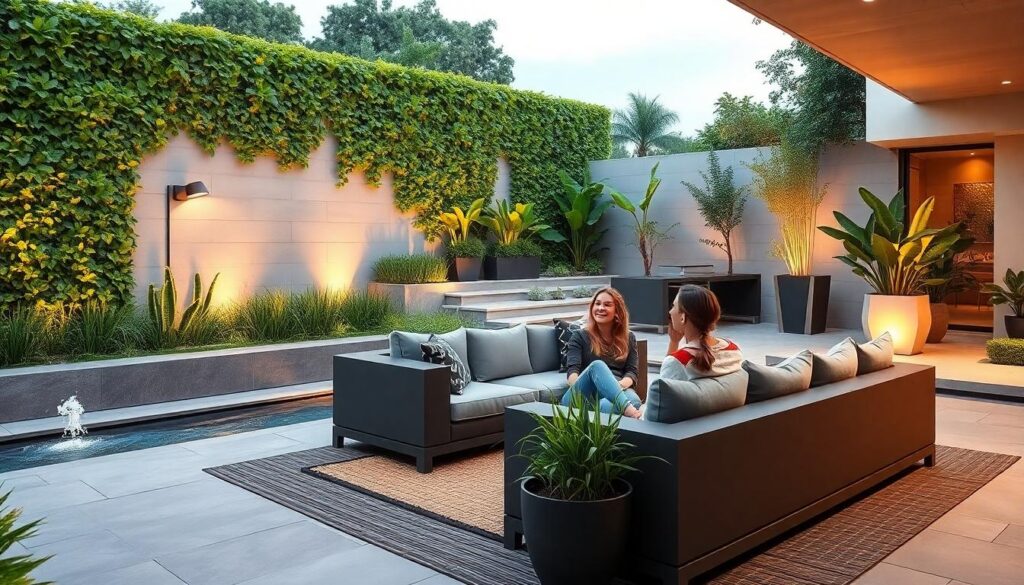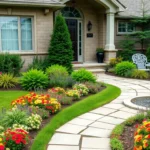Are you ready to transform your outdoor space into a stylish extension of your home? Modern garden design offers the perfect blend of functionality, sustainability, and aesthetics that can elevate any outdoor area regardless of its size.
We’ve curated the most innovative modern garden design ideas to help you create an outdoor oasis that reflects contemporary living. From sleek minimalist layouts to sustainable features, today’s garden designs embrace clean lines, thoughtful plant selection, and smart use of materials. Whether you’re working with a compact urban balcony or an expansive backyard, these modern approaches will maximize your space while creating a stunning visual impact.
7 Stunning Modern Garden Design Ideas for a Contemporary Outdoor Space
1. Geometric Layouts with Clean Lines
Modern garden design thrives on structured geometry and clean lines. We’ve found that incorporating rectangular planters, square pavers, and linear pathways creates a sense of order that’s quintessentially contemporary. Bold shapes like circles and triangles can serve as striking focal points when used sparingly. Try arranging your flower beds in precise geometric patterns to achieve that coveted minimalist aesthetic while maintaining visual interest.
2. Seamless Indoor-Outdoor Living Spaces
Creating a fluid transition between your interior and exterior spaces defines modern industry design. We recommend extending your indoor flooring material to outdoor patios or using similar color palettes to visually connect the spaces. Large sliding or bi-fold doors that open completely to the garden blur the boundaries between inside and out. Adding weather-resistant lounge furniture, outdoor kitchens, and ambient lighting transforms your garden into a true extension of your living space.
3. Minimalist Water Features
Water elements add a ever-changing dimension to contemporary gardens without overwhelming the space. We’ve seen stunning examples of simple reflection pools, sleek fountains, and streamlined water channels that create movement and sound. Rectangular water features with infinity edges appear particularly sophisticated in modern designs. Consider installing subtle water installations that emphasize horizontal lines and clean profiles to maintain that minimalist appeal.
4. Architectural Planting Schemes
Plant selection plays a crucial role in modern garden aesthetics. We suggest focusing on specimens with strong architectural forms and distinctive shapes. Ornamental grasses, succulents, and plants with bold foliage like New Zealand flax or agave make powerful statements. Creating repetitive patterns with just a few plant varieties delivers greater visual impact than using many different species. Maintain clean edges around your planting areas to reinforce the ordered feel of the space.
5. Creative Use of Hardscaping Materials
Innovative material choices can elevate your garden’s contemporary credentials instantly. We love combining polished concrete, Corten steel, composite decking, and large-format porcelain tiles for textural contrast. Mixing natural and manufactured materials creates ever-changing tension that’s inherently modern. For truly cutting-edge appeal, consider incorporating unexpected elements like recycled glass, perforated metal screens, or sustainably sourced exotic woods in your hardscaping features.
6. Strategic Outdoor Lighting
Lighting transforms a modern garden from daytime showcase to nighttime retreat. We recommend installing LED strip lighting under benches or steps for a floating effect. Uplighting sculptural plants or architectural features dramatically highlights their forms after dark. Solar-powered path markers provide functionality without visible wiring. Programmable smart lighting systems allow you to create different moods and scenes depending on how you’re using the space.
7. Sustainable Elements with Modern Appeal
Contemporary garden design embraces sustainability without sacrificing style. We suggest incorporating rain gardens with sleek overflow channels to manage stormwater beautifully. Green roofs on garden structures add insulation while creating additional planting opportunities. Permeable paving allows water infiltration while maintaining clean lines. Solar panels can be integrated into pergolas or garden rooms as functional design elements. These eco-friendly features demonstrate how modern aesthetics and environmental responsibility can perfectly complement each other.
Minimalist Garden Layouts: Less Is More in Modern Design
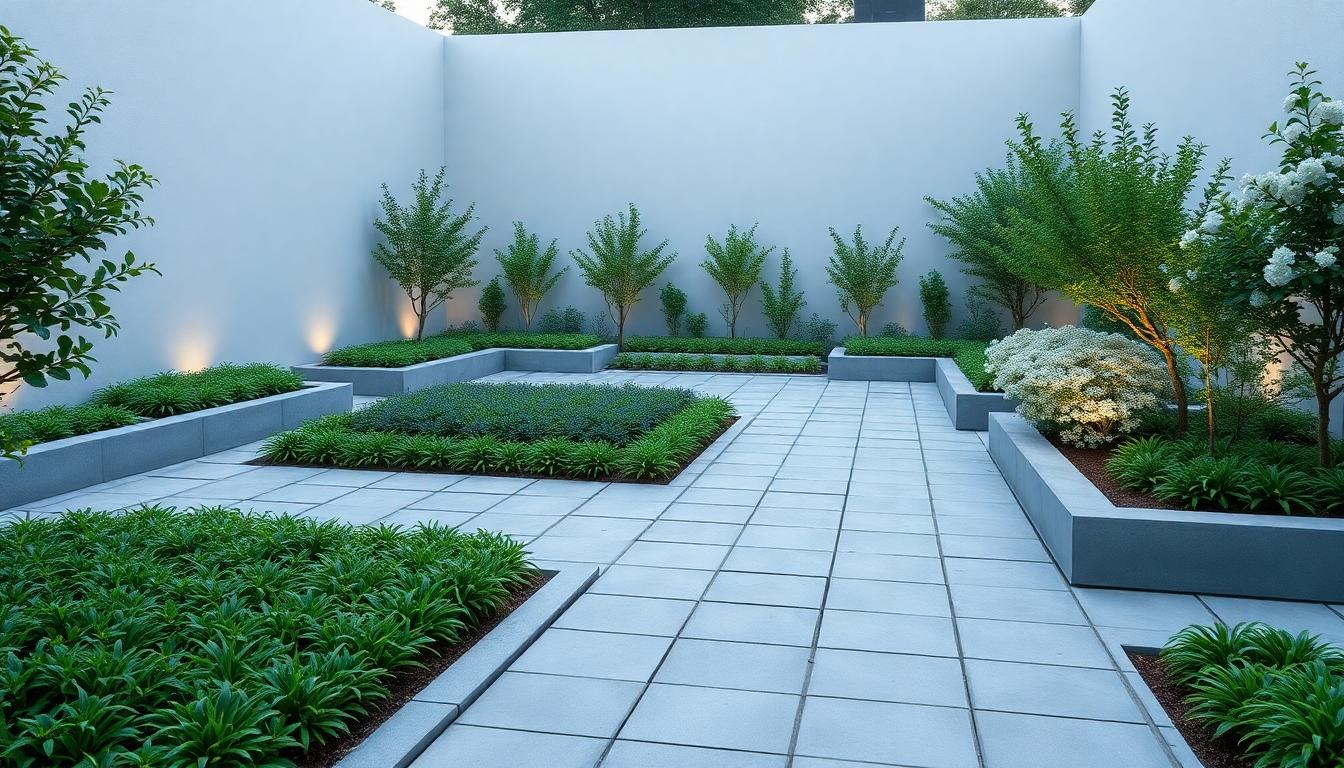
Minimalist garden designs embody the philosophy that simplicity creates profound impact in outdoor spaces. These layouts strip away unnecessary elements to focus on essential beauty through deliberate restraint and thoughtful design.
Clean Lines and Geometric Patterns
Clean lines and geometric patterns form the foundation of minimalist garden design, creating structured outdoor spaces with visual clarity. Square pavers arranged in precise grids establish rhythm and order, guiding the eye through the industry with intention. Rectangular planting beds with sharp edges contrast beautifully against manicured lawns, emphasizing the deliberate organization of space. Modern minimalist gardens often feature straight pathways that intersect at perfect right angles, creating zones that serve distinct purposes while maintaining visual cohesion. These structured designs employ repetition of shapes—circles, squares, and rectangles—to establish a sense of harmony that feels both contemporary and timeless. Angular retaining walls and raised beds further enhance the geometric aesthetic while providing practical answers for level changes in the garden.
Monochromatic Plant Schemes
Monochromatic planting schemes dramatically simplify the visual industry while highlighting subtle variations in texture and form. Gardens featuring exclusively white-flowering plants create ethereal, moonlit effects that glow magnificently during evening hours. Green-on-green designs showcase dozens of foliage textures from glossy to matte, creating depth without color distraction. Variations in a single color palette—such as different shades of blue or purple—offer sophisticated unity while still providing visual interest throughout the seasons. These limited color schemes significantly reduce visual noise, allowing architectural elements and careful plant placement to become focal points. Many minimalist gardens feature single-species plantings in large sweeping blocks, making bold statements through mass rather than variety. Professional landscapers often recommend selecting plants with similar water and light requirements when creating monochromatic schemes, ensuring easier maintenance alongside stunning aesthetics.
Outdoor Living Rooms: Extending Your Interior Style
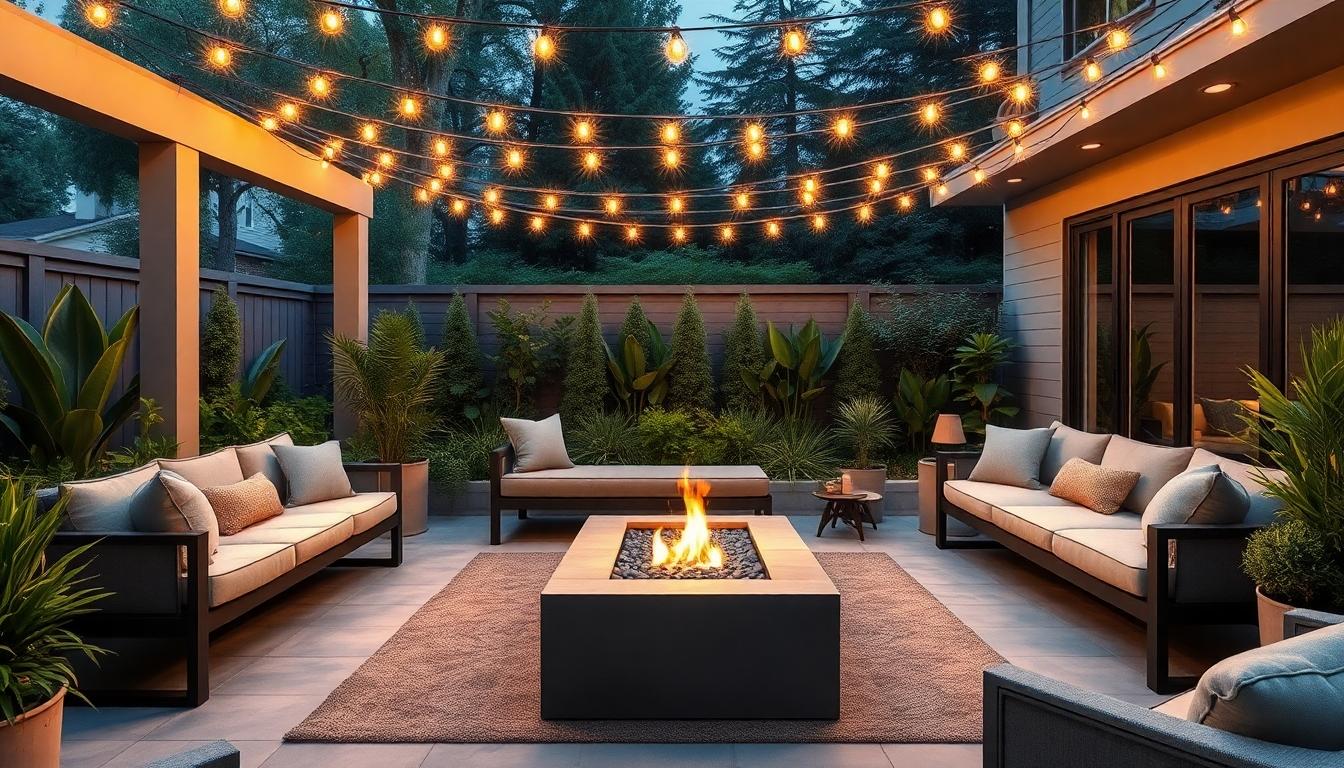
Modern garden design has embraced the concept of outdoor living rooms, creating seamless transitions between indoor and outdoor spaces. These extended living areas allow homeowners to enjoy the beauty of nature while maintaining the comfort and style of their interior design. By thoughtfully selecting materials and design elements that complement your home’s interior, you can create a cohesive look that flows naturally from inside to outside.
Comfortable Seating Arrangements
Modular seating options have become a cornerstone of contemporary outdoor living spaces. These versatile pieces often feature built-in planters that integrate greenery directly into your seating area, creating a harmonious blend of comfort and nature. Fire pits serve as natural gathering points in modern garden designs, providing warmth and encouraging social interaction while adding a striking visual element to your outdoor space. Dedicated dining areas with comfortable, weather-resistant seating transform ordinary meals into special occasions, allowing families to enjoy casual dining experiences surrounded by their carefully curated garden environment.
Integrated Lighting Answers
Solar-powered lights offer energy-efficient illumination for garden pathways and highlight key industry features without increasing utility costs. String lights draped across pergolas or between trees create a festive, inviting atmosphere that extends the usability of your outdoor living room into evening hours. Smart lighting systems represent the cutting edge of garden illumination technology, with automated controls that adjust brightness and color temperature based on time of day or programmed settings. These sophisticated systems can be controlled via smartphone apps, allowing homeowners to create custom lighting scenes that enhance the ambiance of their outdoor living spaces for different occasions or moods.
Water Features with a Contemporary Twist
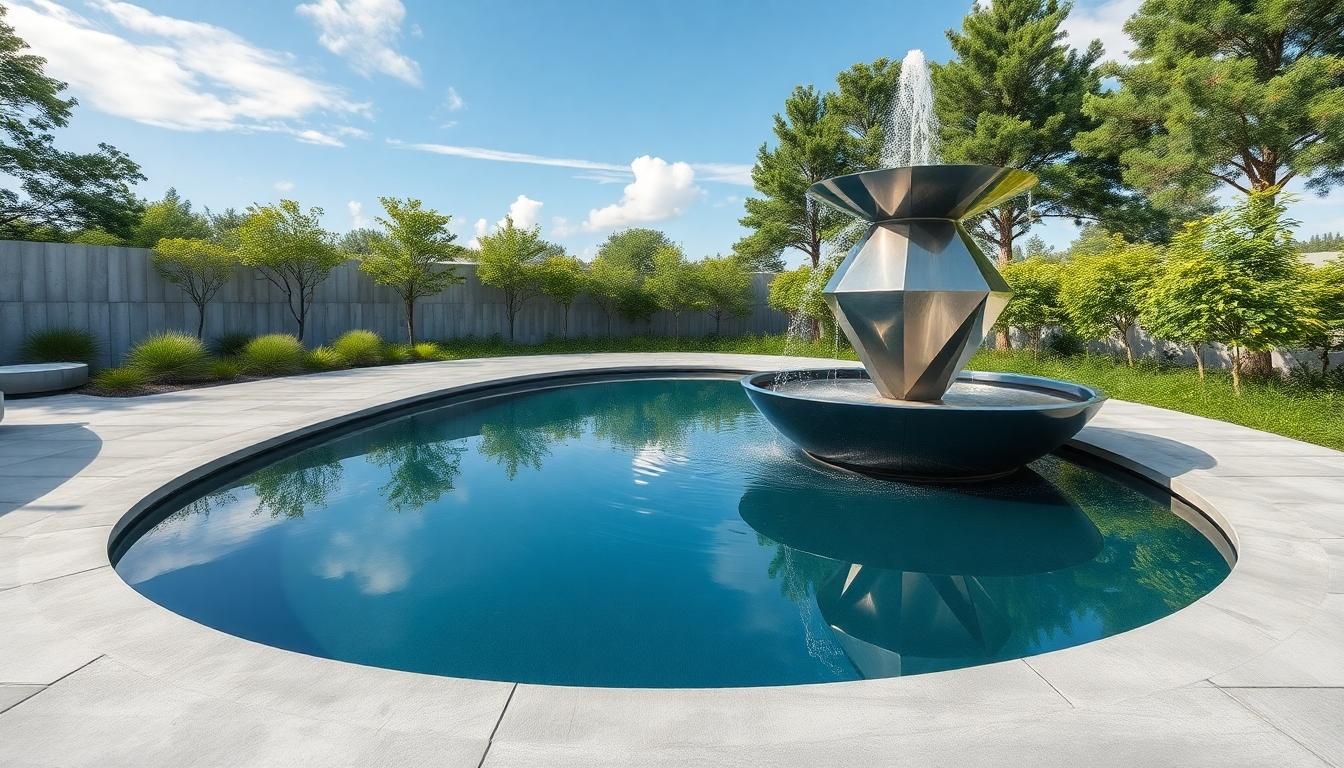
Modern garden design embraces water features that combine minimalist aesthetics with functional appeal. These contemporary elements serve as stunning focal points while adding movement, sound, and visual interest to outdoor spaces.
Sleek Reflecting Pools
Reflecting pools offer an elegant solution for creating visual expansiveness in modern gardens. These shallow, mirrored surfaces capture sky views and surrounding plantings, effectively doubling the visual impact of your industry design. Dark interior finishes maximize reflectivity, creating a dramatic mirror effect that transforms even small urban gardens. Many designers integrate these pools with clean-edged concrete pavers for a seamless transition between hardscaping and water. Nighttime appeal gets enhanced through strategically placed submerged lighting systems that illuminate the water’s surface, creating a magical atmosphere after sunset. These pools work particularly well in compact spaces where their reflective qualities make areas appear larger and more open.
Architectural Fountains
Geometric fountains serve as striking sculptural elements in contemporary landscapes. These bold water features showcase clean lines, angular forms, and industrial materials that complement modern architecture. Stainless steel remains a popular choice for its sleek appearance and exceptional durability in outdoor conditions. Weathered corten steel offers a warmer alternative that develops a distinctive patina over time while maintaining structural integrity. Innovative designs include tiered structures with cascading water effects and minimalist “handrails” that channel water through garden spaces. Solar-powered pumping systems align perfectly with sustainability trends, reducing energy consumption while maintaining visual impact. Adjustable flow controls allow homeowners to customize the sound and movement of water based on mood or occasion. These architectural elements provide both visual intrigue and the soothing soundtrack of moving water, creating multi-sensory experiences in modern garden settings.
Sustainable Modern Gardens: Eco-Friendly Approaches
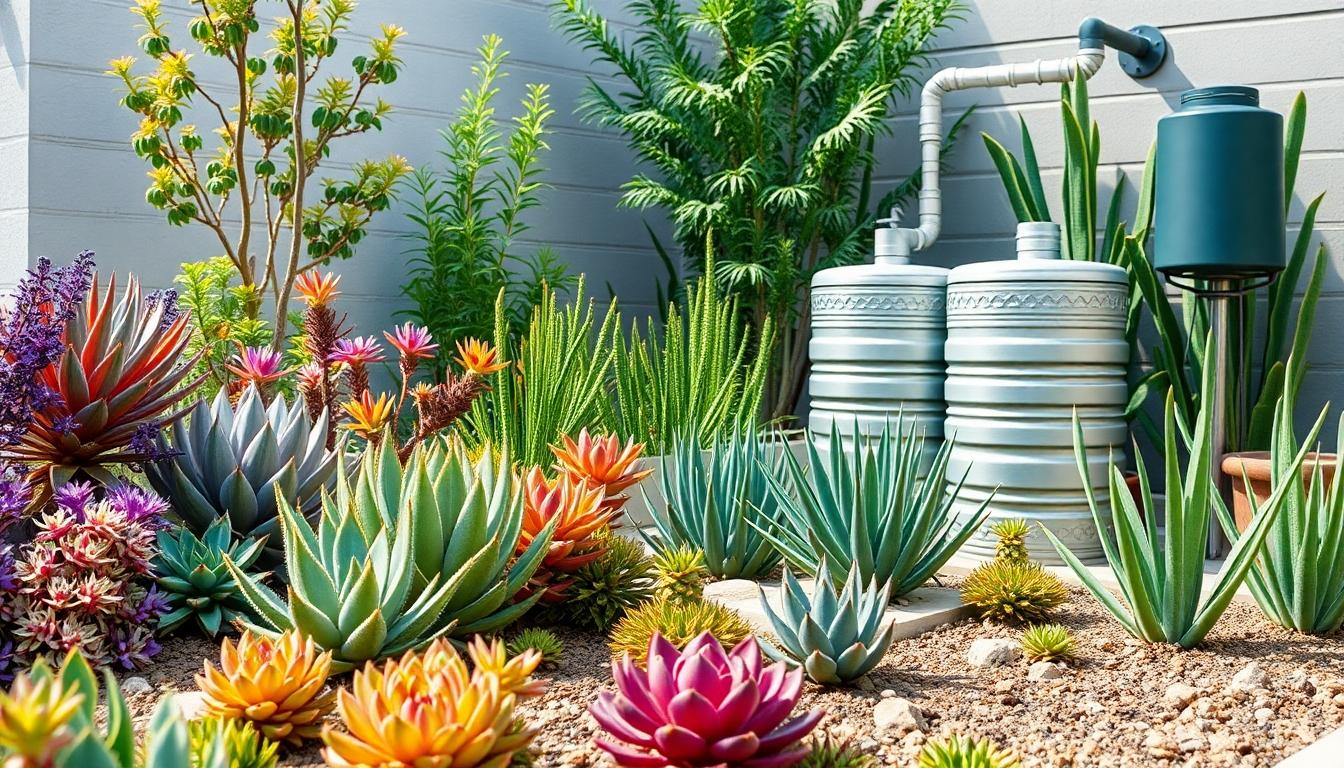
Modern garden design increasingly embraces sustainability, focusing on eco-friendly practices that work with nature rather than against it. Today’s forward-thinking gardens prioritize regenerative approaches that consider local climate conditions and create multi-functional spaces serving both aesthetic and ecological purposes.
Drought-Resistant Plant Selection
Drought-resistant plants form the backbone of sustainable garden designs, offering beauty with minimal resource consumption. These resilient varieties thrive with limited watering, making them perfect choices for areas experiencing water restrictions or regions naturally prone to dry conditions. Succulents and cacti stand out as excellent options for low-rainfall environments, storing water in their fleshy leaves and stems to withstand extended dry periods. Native plant selection plays a crucial role in creating drought-tolerant landscapes, as indigenous species have naturally adapted to local rainfall patterns and soil conditions over thousands of years. We recommend incorporating a variety of textures and heights when planning your drought-resistant garden to maintain visual interest while benefiting from reduced maintenance needs and water bills.
Rainwater Harvesting Systems
Rainwater harvesting systems represent a game-changing addition to modern eco-friendly garden designs, collecting precipitation for later use during dry periods. These systems reduce dependence on municipal water supplies, potentially lowering water bills while conserving valuable resources. Harvesting rainwater also helps manage stormwater runoff, preventing erosion and mitigating potential flooding issues during heavy rainfall events. Simple collection systems can involve strategically placed rain barrels connected to downspouts, while more complex setups might include underground cisterns with filtration components. Water collected through these systems provides chemical-free irrigation for plants, promoting healthier growth and supporting overall garden vitality. Designers now integrate these functional elements as aesthetic features, with contemporary rain chains and designer collection vessels that complement modern garden aesthetics while serving an essential environmental purpose.
Vertical Gardens: Making the Most of Limited Space
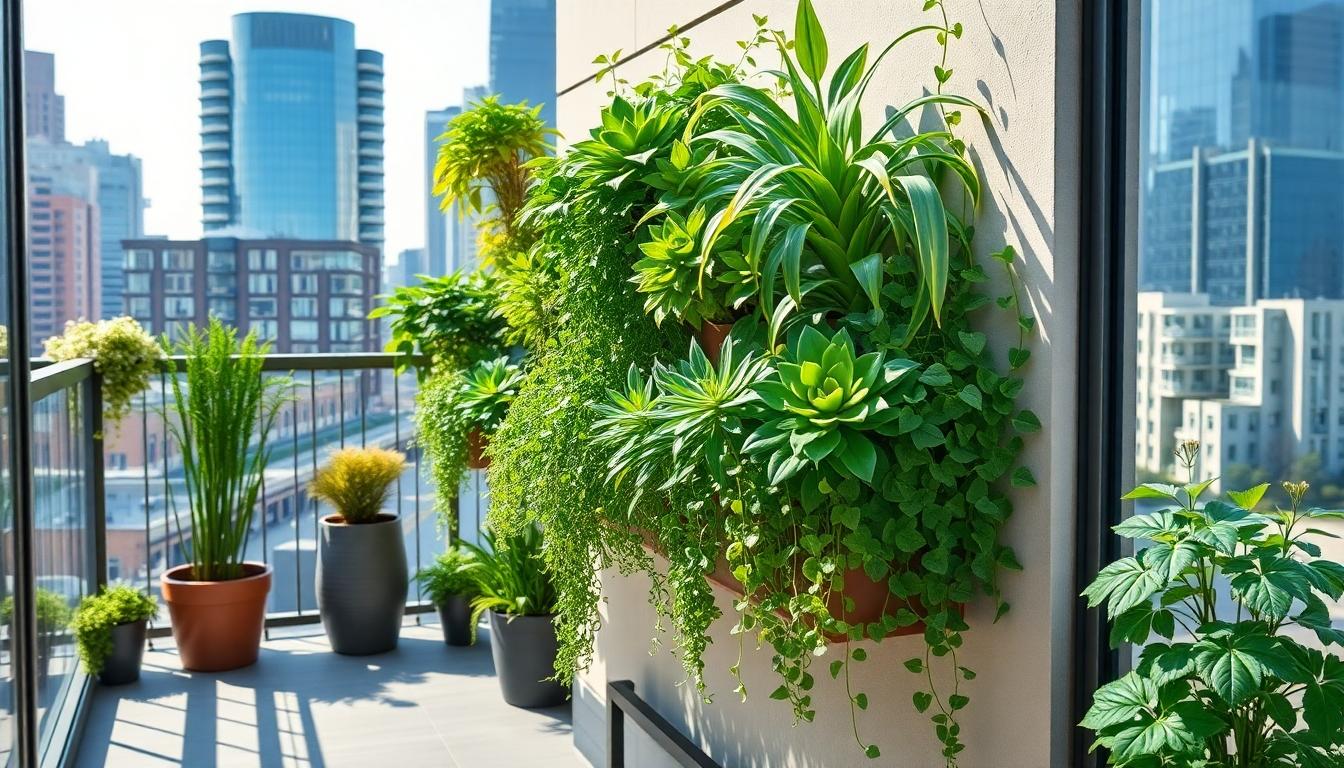
Vertical gardens represent one of the most innovative answers for urban gardeners and homeowners with limited outdoor space. These upward-growing installations transform blank walls and unused vertical surfaces into lush, living tapestries that maximize square footage while creating stunning visual impact.
Living Walls and Green Facades
Living walls are structures completely covered with vegetation, creating dramatic green installations that serve both aesthetic and environmental purposes. These vertical plant systems can be integrated directly into building facades or constructed as freestanding features that define outdoor spaces. Many modern designs incorporate automatic irrigation systems that maintain optimal growing conditions with minimal intervention. Plants are typically arranged in modular panels or fabric pockets, allowing for creative patterns and easy maintenance from the ground up. The environmental benefits of these installations extend beyond their beauty, as they significantly improve air quality by filtering pollutants and producing oxygen. Also, living walls provide excellent insulation properties, helping regulate building temperatures and reducing energy costs throughout the year. Wildlife benefits too, as these structures create vital habitats for birds and beneficial insects, improving urban biodiversity in concrete-dominated environments.
Container Arrangements for Vertical Interest
Container gardening offers unmatched versatility for creating ever-changing vertical interest in modern garden designs. Stacked planters, tiered shelving units, and wall-mounted containers allow for creative arrangement of plants at multiple levels, establishing visual rhythm and dimension in even the smallest areas. Modular container systems can be customized to fit exact spatial constraints, making them perfect for balconies, patios, and narrow side yards. Different container materials—from sleek metals to textured ceramics—add additional design elements that complement contemporary aesthetics. Plant selection becomes particularly important in these arrangements, with cascading varieties like trailing succulents and ivy creating dramatic vertical movement when positioned in upper containers. Maintenance is remarkably straightforward as each planter can be individually accessed, allowing for easy watering, pruning, and seasonal replanting. This approach proves especially beneficial for renters or those wanting flexibility, as entire garden compositions can be rearranged or relocated as needs change. Strategic container positioning also creates natural privacy screens and defines outdoor living zones without permanent construction, making this technique particularly valuable in multi-functional modern gardens.
Modern Materials in Garden Design
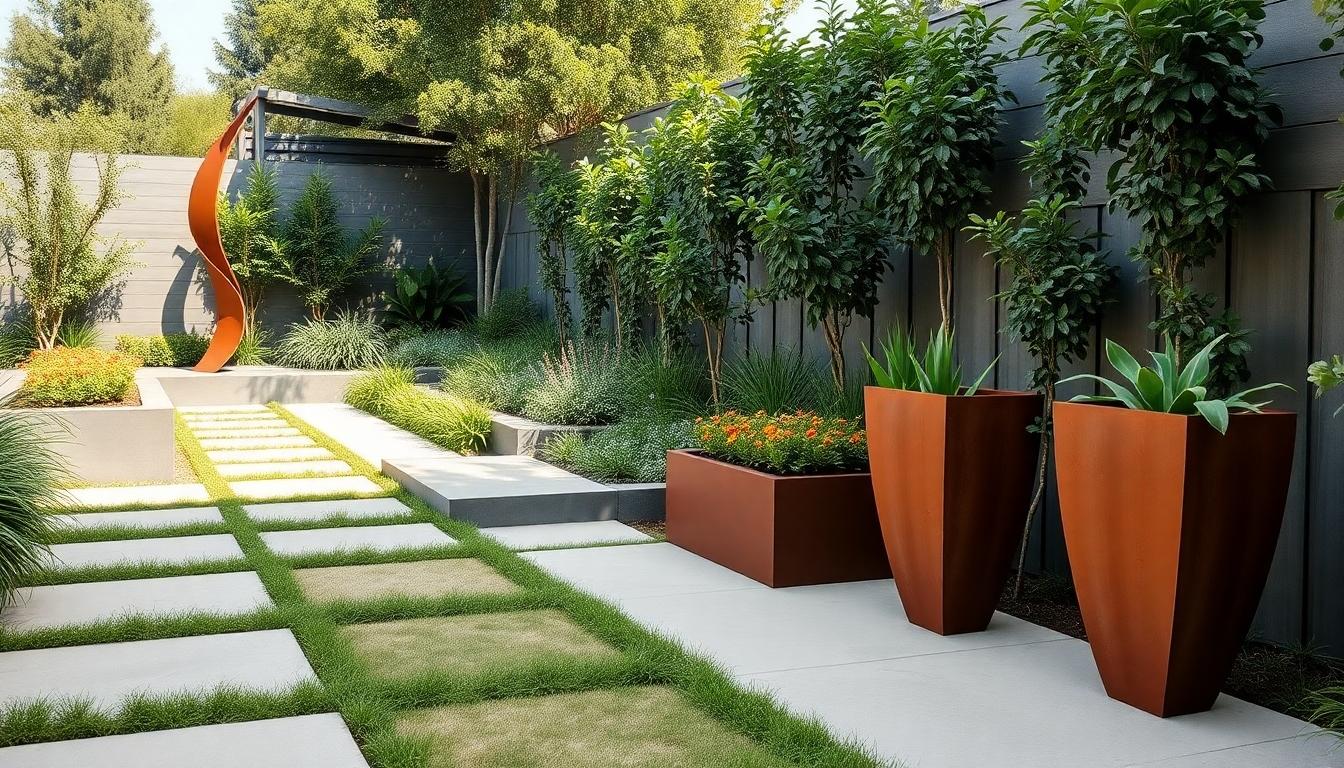
Today’s garden design has evolved to embrace innovative materials that blend functionality with aesthetic appeal. The right materials can transform an ordinary outdoor space into a contemporary masterpiece that reflects modern sensibilities while standing up to environmental challenges.
Concrete Elements and Applications
Concrete has become a cornerstone of modern garden design, offering unparalleled versatility and durability for outdoor spaces. Designers frequently use this adaptable material for creating sleek pathways that guide visitors through the garden industry. Patios constructed from concrete provide stable, low-maintenance surfaces perfect for outdoor furniture and social gatherings. Beyond functional applications, concrete shines in decorative features such as sculptural elements, raised planters, and custom seating that serve as focal points in the garden. The material’s ability to be molded into various textures and colors allows for customization that complements any design aesthetic. Many homeowners appreciate how concrete elements develop character over time, with subtle weathering adding to rather than detracting from their appeal.
Cor-Ten Steel and Metal Accents
Cor-Ten steel has revolutionized modern garden design with its distinctive weathered appearance that develops a rich, rusty patina over time. Garden designers regularly incorporate this material into planters that create striking contrasts against lush greenery. Sculptural elements fashioned from Cor-Ten steel serve as year-round artistic statements that evolve with the seasons. Gate designs utilizing this material offer both security and style, making a bold statement at garden entrances. The contemporary aesthetic of Cor-Ten combines seamlessly with a rustic look, making it suitable for both urban and rural settings. Additional metal accents such as aluminum, copper, and stainless steel provide complementary options for designers seeking to create a cohesive modern garden theme. These materials require minimal maintenance while delivering maximum visual impact, making them particularly valuable for time-conscious homeowners looking to create sophisticated outdoor environments.
Smart Technology Integration for Modern Gardens
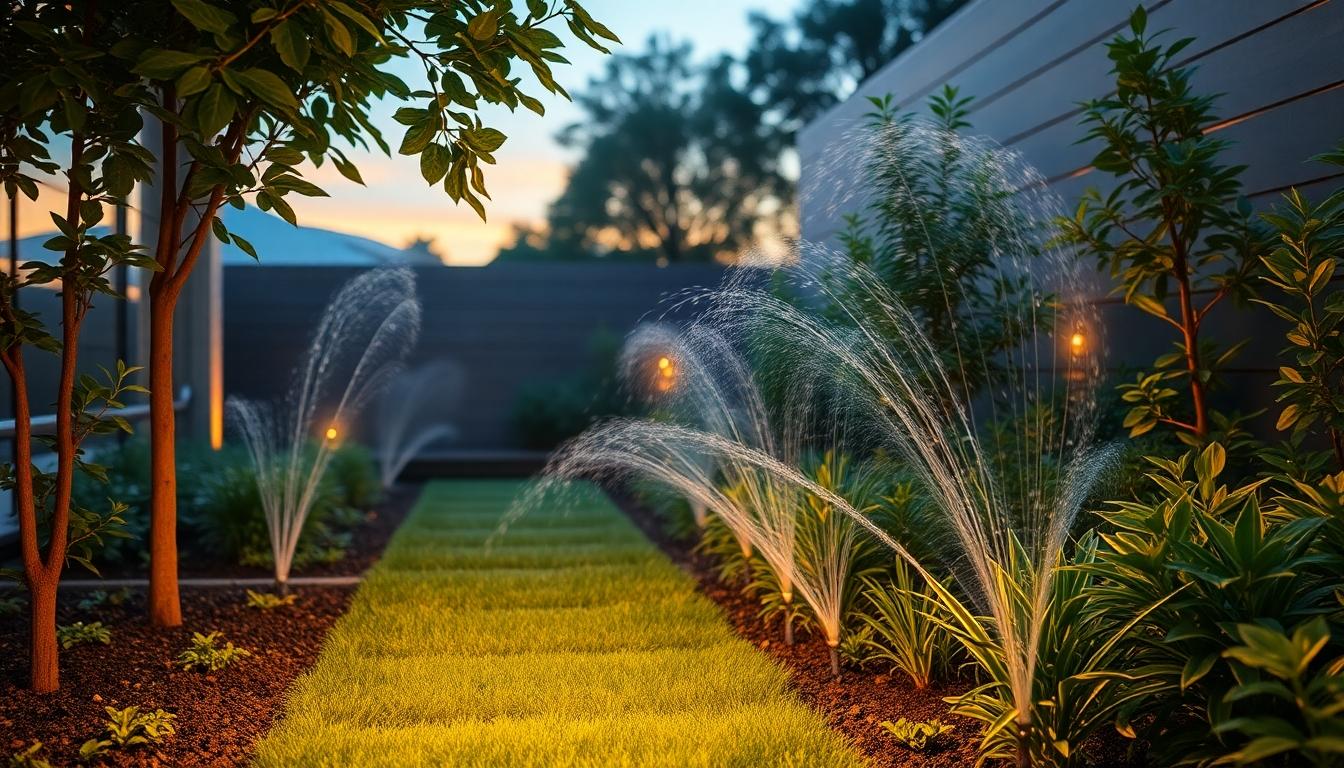
Today’s gardens are becoming smarter, with technology seamlessly blending into outdoor spaces to enhance both functionality and enjoyment while reducing maintenance requirements.
Automated Irrigation Systems
Automated irrigation systems represent one of the most impactful technological additions to modern gardens. These smart systems optimize water usage by delivering precise amounts of moisture exactly when plants need it. Soil moisture sensors communicate with the central system to prevent overwatering, ensuring your garden remains healthy while conserving this precious resource. Many advanced systems offer zone-exact watering schedules that account for different plant varieties and sun exposure areas. Weather-responsive features can automatically adjust watering times based on recent rainfall or forecasted conditions. Installation of these systems typically requires professional expertise, but the long-term benefits include reduced water bills, healthier plants, and significantly less time spent dragging hoses around your garden.
App-Controlled Lighting and Climate Features
Smart lighting transforms garden spaces with functionality that extends well beyond basic illumination. Modern systems allow complete control via smartphone apps, enabling homeowners to adjust brightness, color, and timing from anywhere. Motion-activated security lights can be integrated with decorative elements to create both safety and ambiance. Climate control features have similarly evolved, with app-controlled heaters, misting systems, and fans that make outdoor spaces comfortable year-round. Smart sensors can monitor environmental conditions like temperature and humidity, automatically adjusting settings to protect sensitive plants. These technologies create personalized outdoor experiences that respond to both planned events and spontaneous gatherings with perfect lighting and comfortable temperatures. Integration with voice assistants further simplifies control, allowing verbal commands to transform your garden atmosphere instantly.
Transforming Your Space with Modern Garden Design Elements
The beauty of modern garden design lies in its ability to transform any outdoor area into a personalized sanctuary that reflects your lifestyle. By embracing minimalist principles geometric layouts and sustainable practices we’ve seen how contemporary approaches can maximize both form and function.
Whether you’re drawn to the sleek lines of architectural plantings the tranquility of water features or the innovation of vertical gardens there’s a modern design element that can elevate your space. Smart technology and thoughtful material selection further enhance these environments making them more enjoyable and easier to maintain.
Remember that the most successful modern gardens balance aesthetics with practicality creating spaces that not only look stunning but serve your needs throughout the seasons. Your outdoor space awaits its transformation into a modern masterpiece that connects you with nature in meaningful new ways.
Frequently Asked Questions
What defines modern garden design?
Modern garden design is characterized by clean lines, geometric patterns, and a minimalist approach that blends functionality with aesthetics. It emphasizes structured layouts, thoughtful plant selection, and a seamless connection between indoor and outdoor spaces. Contemporary designs often incorporate sustainable elements and innovative materials like concrete and Cor-Ten steel, creating stylish extensions of the home that are both visually appealing and environmentally responsible.
How can I create a minimalist garden?
Create a minimalist garden by focusing on clean lines, geometric patterns, and a restrained plant palette. Use square pavers and rectangular planting beds for visual clarity. Opt for a monochromatic planting scheme to showcase texture and form rather than color variety. Select plants with similar water and light requirements for easier maintenance. Remember, in minimalist design, every element should serve a purpose—less is truly more.
What are the best plants for a sustainable modern garden?
Drought-resistant varieties like succulents, ornamental grasses, and native plants are ideal for sustainable modern gardens. These plants require minimal water once established and can thrive with less maintenance. Consider species like lavender, agave, sedum, and native grasses that complement contemporary aesthetics while being environmentally friendly. Choose plants adapted to your local climate to reduce resource consumption and create a naturally harmonious landscape.
How can I integrate water features into a modern garden design?
Incorporate sleek reflecting pools with mirror-like surfaces or architectural fountains made from industrial materials like stainless steel or concrete. Keep designs simple and geometric to maintain the modern aesthetic. Consider wall-mounted water features for small spaces or minimalist channel designs that create linear water movement. These elements add visual interest, soothing sounds, and a sense of tranquility while serving as stunning focal points.
What lighting options work best for contemporary outdoor spaces?
Integrated lighting solutions that blend seamlessly with the landscape are ideal for modern gardens. Consider recessed pathway lights, uplighting for architectural plants, and hidden strip lighting under benches or steps. Solar-powered options and smart lighting systems offer energy efficiency and customizable ambiance. Focus on highlighting key features rather than flooding the space with light, creating dramatic contrasts that enhance the garden’s after-dark appeal.
How can I maximize a small urban garden space?
Utilize vertical gardening by installing living walls or wall-mounted planters to transform blank surfaces into green features. Implement multi-functional elements like built-in seating with storage. Choose reflective surfaces and materials to create the illusion of space. Opt for a limited color palette and maintain clean lines throughout the design. Strategic lighting can also expand the perceived boundaries of small spaces when enjoyed in the evening.
What materials are trending in modern garden design?
Contemporary gardens often feature concrete for its versatility in creating pathways, patios, and custom features. Cor-Ten steel is popular for its weathered, rustic appearance in planters and sculptural elements. Other trending materials include aluminum and stainless steel for their low maintenance requirements, composite decking for durability, and large-format porcelain tiles that mimic natural materials while offering superior performance in outdoor settings.
How can smart technology enhance my garden?
Smart technology can transform your garden through automated irrigation systems with soil moisture sensors that optimize water usage. App-controlled lighting allows customization of brightness and color for different occasions. Climate features like automated awnings and outdoor heaters can extend usability throughout changing seasons. These technologies not only enhance enjoyment but also reduce maintenance requirements and resource consumption, creating a more sustainable and convenient outdoor experience.
What is the concept of an outdoor living room?
An outdoor living room creates a seamless transition between indoor and outdoor spaces by applying interior design principles to garden areas. It typically features comfortable, weather-resistant furniture arranged in conversational groupings, often around a focal point like a fire pit. These spaces incorporate elements such as outdoor rugs, pillows, and ambient lighting to enhance comfort while maintaining style. The result is a functional extension of your home that encourages outdoor relaxation and entertainment.
How do I maintain a modern garden design?
Maintain a modern garden by establishing regular pruning schedules to preserve clean lines and structural forms. Implement efficient irrigation systems to reduce water waste while keeping plants healthy. Choose low-maintenance materials that weather gracefully, like Cor-Ten steel or composite decking. Consider incorporating smart technology for automated care. The key is planning for simplicity—select elements that will age well with minimal intervention, preserving the clean, uncluttered aesthetic that defines modern garden design.

